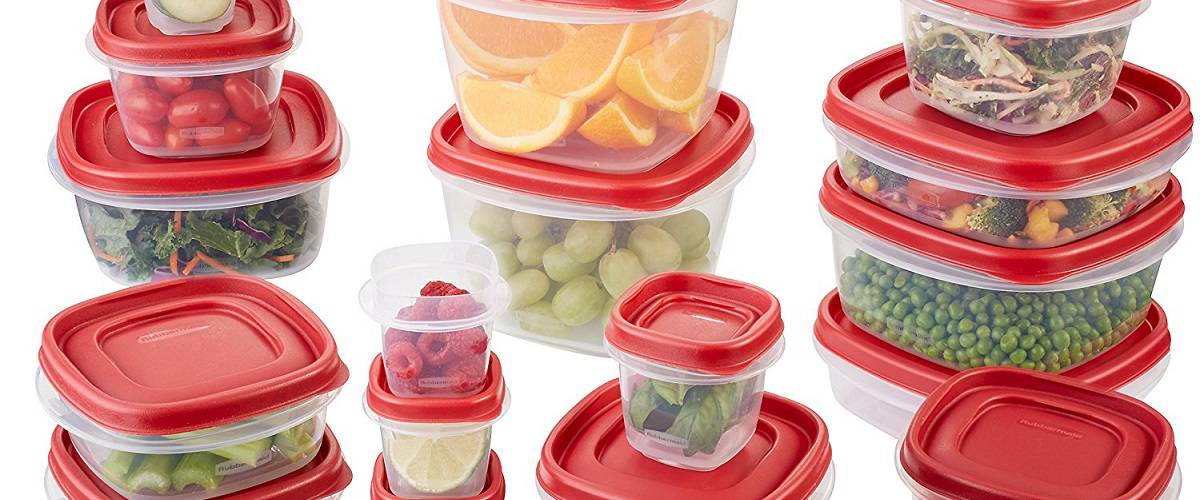As mentioned in a few articles at this point, proper storage of your food is essential. After all, if you store food improperly, the food will be susceptible to a variety of issues caused by temperatures, poor sealing, and more.
While you can learn the proper techniques for storing your food, you’ll need to also have strong food storage containers. But how do you know what food storage containers to choose outside of reading reviews of products?
Well, we are here to here to help!
What to Consider When Choosing Your Food Storage Container
You need to be conscious of what the container can achieve if you want to be a successful food prepper. Here are some things to take into consideration when selecting your food storage containers:
1. How storable are the containers?
When you store food and liquids for any emergency, you need to store quite a bit, though it will be dependent on the length of the emergency, your family size, caloric intake, diet, etc. You also need to ensure that the storage containers are well-organized to maintain maximum efficiency during your prepping. For instance, you should choose a container that is stackable.
2. Are pests able to get into the containers?
Another big deal. You don’t want rats, mice, maggots, or other bugs infiltrating your containers. You need to choose a container that is inaccessible to pests.
3. Are the containers 100 percent sealed?
You need to ensure that the containers you are purchasing are sealed, through and through. They need to be air-tight so that humidity and oxygen won’t affect the food.
4. Can light easily penetrate the containers?
Not only should you store containers in a dark area, but the containers should be made with light-blocking materials since light can break down food.
What food should you store in containers?
The only food you should store in food containers are those that are low in moisture – so basically flour, rice and other grains, beans, dried fruit, powdered milk, powdered potatoes, jerky, nuts, and more.
The Best Containers to Store Your Food
1. Tupperware
For short-term storage, you cannot go wrong with Tupperware. One of the best inventions for mankind, Tupperware is airtight and cheap. However, as I’ve mentioned, it’s best for short-term storage. You should change the containers every six months or use the food beforehand. You should also store them in a dark area so that the light won’t penetrate the plastic.
2. Canned Foods
Canned foods are simple and convenient, requiring a trip to the grocery store – perfect for beginning preppers. The food is already packed into the cans, and they keep for long periods of time! Make sure to check the labels for nutritional content to make the most of your meals, as nutrition is essential in food prepping. To learn more about canned foods, please refer to our guide “The Prepper’s Guide to Store-Bought Canned Foods.”
3. Mason Jars
Mason jars are available everywhere and most often used for canning. However, you can also store dry goods in mason jars. To typically use a mason jar for dry storage, fill the jar with the good (beans, rice, etc.) so that there is about one inch of room between the product and the top. After that, insert an oxygen absorber.
Fun fact: never reuse lids, as once the seal is broken, you won’t be able to reseal the jar properly with the same seal.
4. Food-Grade Buckets
Food grade buckets are special buckets, crafted with a plastic that serves to prevent the bleeding of chemicals into the food. While they are more expensive than your typical buckets, they are worth every penny, as they are safe and preserve the flavor of the food. When you seek out food grade buckets, you should ensure that they:
- Are crafted with high-density polyethylene
- Do not include bisphenol A (BPA)
- Meet not only FDA requirements but also NMFC and UFC requirements
As a side note, you need force to seal food grade buckets. You’ll need to whack it with a tool, such as a mallet, to ensure that the lid is secure.
5. Mylar Pouches
Mylar pouches are fantastic for storing food. In fact, lots of food companies store food in mylar pouches to keep them fresh. You can buy mylar pouches, on their own, individually or in bulk. Even better is that you can vacuum pack food inside mylar pouches or purchase mylar pouches with oxygen absorbers. But how could you seal them? With heat. So if you have a hair straightener or an iron, you’ll be able to seal mylar pouches with ease.






